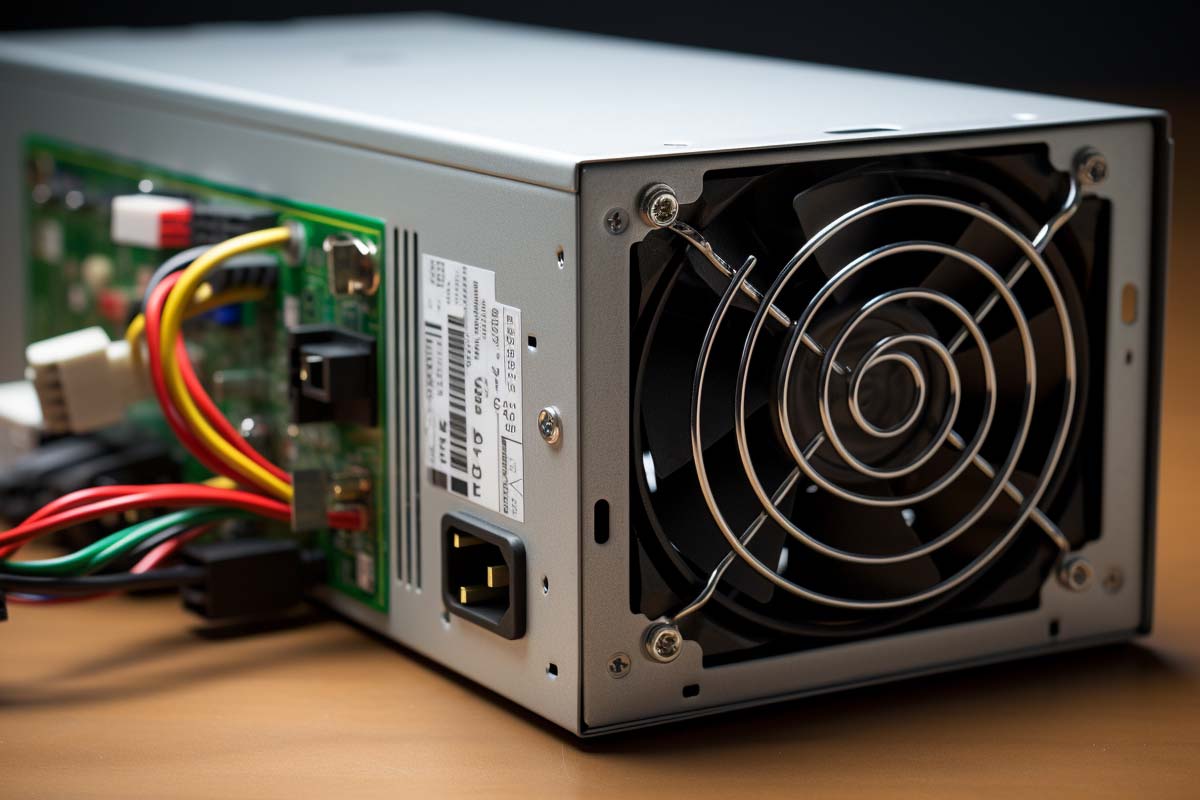What Is Data Retention Policy?
Definition: Data Retention PolicyA Data Retention Policy is a set of guidelines and practices that dictate how long data should be kept and maintained before being deleted or archived. This

Power supply problems are among the most crucial issues in computer hardware, potentially affecting every component of the system. These issues arise when the power supply unit (PSU) fails to deliver the necessary power or malfunctions.
Common Causes of Power Supply Problems
Physical Signs
Software Indicators
Tools and Techniques
Steps for Diagnosis

View our comprehensive training series covering all the key elements and certifications needed to successfully excel in an IT User Support Specialist job role.
Basic Fixes
Advanced Solutions
**: If diagnostics indicate a failure, replacing the PSU is often the best solution. Choose one that matches or exceeds the original specifications.
Regular Maintenance
Hardware Considerations

Your career in information technology last for years. Technology changes rapidly. An ITU Online IT Training subscription offers you flexible and affordable IT training. With our IT training at your fingertips, your career opportunities are never ending as you grow your skills.
Plus, start today and get 30 days for only $1.00 with no obligation. Cancel anytime.
Summary and Final Thoughts Power supply issues can be complex, but understanding the symptoms, diagnosis, and solutions is crucial for maintaining a stable and functional computer system. Regular maintenance and using quality hardware are key to preventing PSU-related problems.
Key signs include the computer not turning on, random restarts or shutdowns, unusual noises from the power supply unit, and general system instability or performance issues.
Yes, a malfunctioning power supply can potentially damage other components by providing irregular or insufficient power, leading to overvoltage or undervoltage situations.
Initially, check all cable connections for security and damage. Use a power supply tester or multimeter to check the PSU’s functionality. If you’re not comfortable doing this, consult a professional.
Select a PSU that matches or exceeds the wattage requirement of your system. Consider factors like physical size, connector availability, efficiency rating, and brand reputation.
Repairing a PSU can be dangerous due to the high voltages present, even when unplugged. It is generally safer and more cost-effective to replace a faulty PSU rather than attempt to repair it, unless you have specific expertise in electronics.
Lorem ipsum dolor sit amet, consectetur adipiscing elit. Ut elit tellus, luctus nec ullamcorper mattis, pulvinar dapibus leo.
$49.99 Original price was: $49.99.$16.99Current price is: $16.99. / month with a 10-day free trial
Definition: Data Retention PolicyA Data Retention Policy is a set of guidelines and practices that dictate how long data should be kept and maintained before being deleted or archived. This
Definition: Grease Monkey (User Scripting)Grease Monkey, commonly referred to as Greasemonkey, is a user scripting tool that allows users to customize the way web pages appear and function by using
Definition: Python Django REST FrameworkThe Python Django REST Framework (DRF) is a powerful and flexible toolkit for building Web APIs in the Python programming language. It is built on the
Definition: Virtual ApplianceA virtual appliance is a pre-configured virtual machine image, typically built to run on a hypervisor or within a virtualized environment. These appliances contain an operating system and
Definition: Open/Close PrincipleThe Open/Close Principle is one of the five SOLID principles of object-oriented design that dictates that software entities (such as classes, modules, and functions) should be open for
Definition: Escalation PolicyAn escalation policy is a predefined set of procedures and steps that an organization follows to address and resolve issues, incidents, or problems that exceed the scope of
Definition: Virtual Machine BackupVirtual Machine Backup refers to the process of creating and storing copies of virtual machines (VMs) to ensure data availability, integrity, and recoverability in case of data
Definition: Firewall InspectionFirewall inspection refers to the process by which a firewall analyzes network traffic to enforce security policies. This involves scrutinizing packets of data to detect and prevent unauthorized
Definition: Vertex ShaderA vertex shader is a type of programmable shader in computer graphics that handles the processing of individual vertices. It is a crucial component in the rendering pipeline,
Definition: Exception Handling in ProgrammingException handling in programming is a construct in many programming languages that is designed to handle the occurrence of exceptions—anomalies or unexpected events that disrupt the
Definition: VPN (Virtual Private Network)A VPN, or Virtual Private Network, is a technology that creates a secure and encrypted connection over a less secure network, such as the internet. VPNs
Definition: Application Layer FirewallAn Application Layer Firewall is a type of firewall that monitors and controls network traffic based on the application layer (Layer 7) of the OSI model. Unlike
ENDING THIS WEEKEND: Train for LIFE at our lowest price. Buy once and never have to pay for IT Training Again.

Get ready for the updated 220-1201 & 220-1202 exams with our brand-new CompTIA A+ training—designed to help you pass with confidence and start your IT career strong. Access this course and over 2,900 hours of expert-led IT training when you sign up for any of our All-Access Passes. Don’t miss out—enroll now and start learning today!